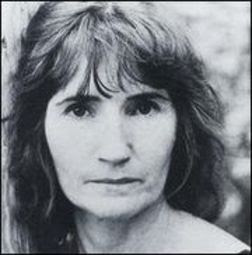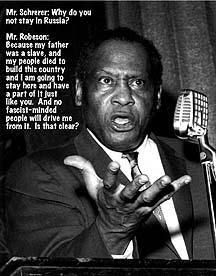
A TALE OF TWO MAY DAYS---JOINING IN SOLIDARITY
by John Pietaro
This coming Sunday is MAY DAY, THE INTERNATIONAL DAY OF THE WORKER. After more than 50 years of red-baiting against this global labor holiday, last year organized labor finally shook of the fear and marched in many cities along with comrades from the immigrants rights community and the wider Left. In NYC we had an amazing turn-out but the presence of two different May Day rallies, one specifically in honor of immigrant workers in Union Square and the other being simply worker-based and located in Foley Square, saw an uncomfortable rift in solidarity---what May Day is supposed to be all about. Happily, this year we are seeing a powerful alliance between the two organizing committees. I have been excited to be a part of the steering committee over the past few weeks, representing my union DC 1707 AFSCME, and watched as the plans have grown. This week there was a special joint press conference in which organizers from the two rallies sat together and offered a joint plan.
May Day in New York has an amazing heritage. In the 1930s and 40s, hundreds of thousands marched and rallied and the turn-out featured rank-and-file members as well as staff and leaders from all of the unions. Powerful cultural workers such as Paul Robeson and Pete Seeger offered rousing soundtracks to the proceedings and brilliant leaders and heads of state were counted among the guest speakers. The more moderate participants stood shoulder to shoulder with communists, socialists and anarchists (as they most surely did at work, anyway) and a decidedly radical message was the order of the day. Working people marched militantly and with great pride in their jobs, their unions, their progressivism!
The first blast of cold war chill changed all of this drastically and grand May Day parades quickly shrunk to small marches throttled by neo-fascist rhetoric and at times their violent assaults. The Left came under fire and was subject to HUAC hearings, blacklisting, public humiliation, detentions, and the worst kind of reactionary opportunism. The conformism of the 50s saw purges in the most radical of the CIO unions and by the time of the AFL and CIO merger, there seemed to be little chance of organized labor ever walking in the May Day light again. The Communist Party maintained annual May Day gatherings in Union Square Park but these too faded out by 2003. Several years ago, immigrants rights groups, under fire from Bush-era xenophobia, began to march and rally on May Day. Not subject to the average American fear of things "communistic", the immigrant activists reclaimed this day of the worker, recalling its significance in their homelands and teaching us a lesson in turn. By 2010, organized labor finally took the hint and lower Manhattan hosted a large and inspiring rally which, joined by some of the immigrants rights groups fresh from reveling in Union Square, forged a union, if you will, that was but a seed of what's to come.
This brings us to the here and now; radical arms of labor are working closely with highly active immigrants rights organizations in celebration of May Day. The Union Square rally will begin at noon and it will focus on radical calls for immigration reform; speakers, singers, poets and dancers are on the bill. But by 1PM, a large contingent of this group will march down to Foley Square---Worth St, near Centre St---where a mass gathering will be occurring. The forces of labor will be there alongside student groups, Left political parties and coalitions, feminists, peace activists, the No-Wal-Mart-in-NY collective and, yes, a swath of immigrants rights organizations. Speakers will come from all of these organizations and while progressive politicians are invited to be present, none will be allowed to speak on this event, by and for workers. And there will be music, including my own Flames of Discontent, plus an African drumming group, 1199's dance band GQ, the Reverend Billy and more. Here's a new, concerted vision for May Day in NYC and it will call on elected officials to end the attack on unions, immigrants and the poor. Sure, there may still be a level of division, but here's the first major vehicle for a united progressive stand, one which is inclusive and goddamned proud to be radical. It's a new day, comrades.
-----------------------------------------------------
This Sunday, May 1st, join us as we celebrate May Day 2011!
This year, more than ever, the message of May Day as the Workers’ Day is timely. Attacks on public services and the pension and health benefits of those who provide them continue unabated with some governors going so far as attempting to outlaw public sector unions.
Construction trades continue to suffer huge and long term unemployment with too many workers going months without work. Now the employers association has declared war on the trades in advance of June contract talks.
Private sector union members are finding their standards held blackmail to the threats of employers to outsource or move their jobs overseas. With more states attempting to emulate the viciously anti-immigrant legislation passed in Arizona even as the problems of wage theft from immigrants undermine the rights of all workers, immigrant workers continue to require our defense, as we struggle for a fair immigrant policy.
We hope you will join us in the fight for Labor Rights, Immigrant Rights, Jobs for All.
In Solidarity,
Barbara Bowen, Sonia Ivany, Wilfredo Larancuent, Kevin Lynch, Larry Moskowitz




